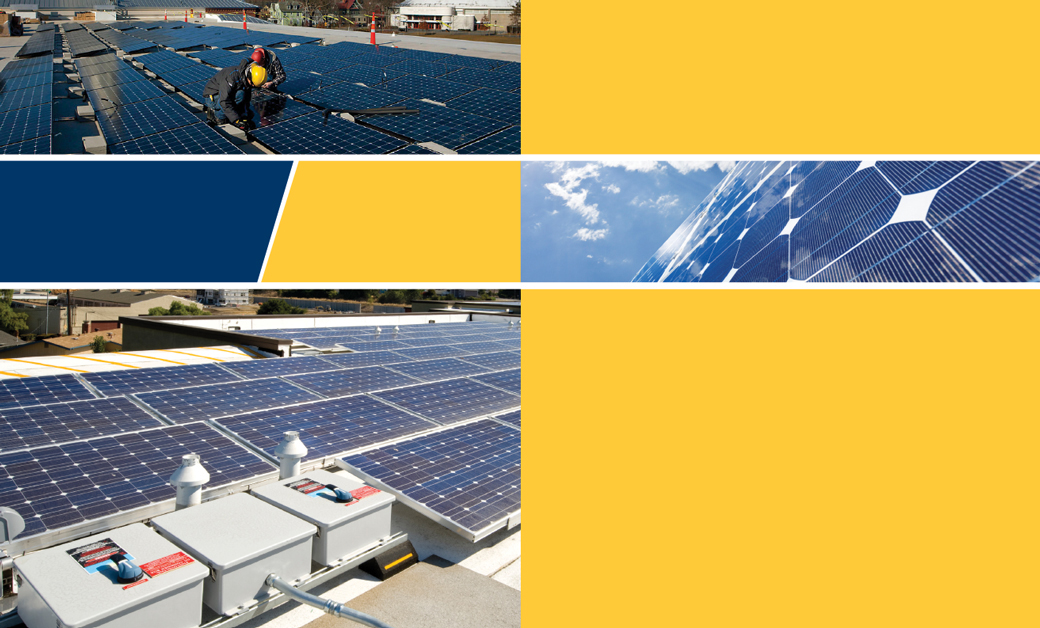"A scientific theory should be as simple as possible but no simpler." —Albert Einstein
If Einstein were alive, many roofing contractors might be turning to him for help. Faced with the complex problem of choosing roof systems to fit their customers' budgets and building code requirements, roofing professionals are being bombarded with "science-based" solutions that can be either too simple or too complicated.
Although much of the industry discussion has focused on the choice of white or black membranes, researchers and roofing professionals now realize choosing a roof system is not just a black or white issue. Are there guidelines in our future based on science-based information that also work in the real world?
A small army of researchers is looking at this problem, factoring in issues such as cost, climate, membrane sustainability, roof color and insulation. I talked to several leaders in the field, and they shared their insights and questions about where the industry is and where it needs to go to achieve energy-efficient roof systems.
Affecting the weather
Matei Georgescu is an assistant professor at Arizona State University's School of Geographical Sciences and Urban Planning and an expert on the interaction between the Earth's surface and the atmosphere that surrounds it. He asks: "When choosing a roof system, what are the regional differences that should be taken into account beyond north-south variations in temperature?"
Trying to answer at least part of that question, Georgescu and three colleagues from the Environmental Protection Agency conducted what he calls the first study of its kind: a detailed review of cool and green roof systems and their effects on rainfall, climate and energy use during all seasons.
The thing to realize, according to Georgescu, is "geography matters." In his study abstract, published in the Proceedings of the National Academy of Sciences, he states: "Our results … reveal tradeoffs among different adaptation options [cool and green roofing] for some regions, showing the need for geographically appropriate strategies rather than one-size-fits-all solutions."
What kind of tradeoffs did Georgescu and his team identify? Some of their findings reinforced what other researchers have found: If reflective roofing is used in cold climates, the "heating penalty" in the winter could offset energy savings during warmer months.
But the study revealed other unintended consequences.
Georgescu's research has led him to suspect that though white roof membranes may work well in California, they also could reduce rainfall in Florida and along the East Coast.
Georgescu explains: "Summertime rainfall over Florida and other portions of the eastern U.S. is largely convective, relying on warm rising parcels of air to condense and eventually form clouds and precipitation. Cooling the lower portions of the atmosphere by way of large-scale white roof membrane deployment will decrease the ability of air parcels to rise. Rising air is a necessary element of precipitation formation."
Georgescu underscores that until the industry knows how roof membrane color will affect all climatic variations in a certain region, it needs to move forward cautiously with blanket recommendations.
"Climate is not just about temperature," Georgescu says. "We really try to emphasize that. A couple of years ago, white roofs were regarded as the silver bullet. Now, research has the ability to show more complexity. We need to be careful and look beyond just temperature and show the effectiveness of a comprehensive strategy."
The question of heat
Another nagging question for researchers, one that at first seemed basic and now seems more complex is: "Where does heat go when it is reflected off a roof?"
This remains one of the unanswered questions surrounding low-slope roof systems. Various theories have conjectured reflected heat could dissipate the cloud cover, thereby contributing to global warming. Others have shown that on a limited scale, reflected heat just above a roof system's surface can disturb the functioning of heating and air conditioning vents. And there are well-documented cases of reflected heat from buildings in urban areas shining brightly on their neighbors—most notably from the Walt Disney Concert Hall in Los Angeles where occupants of surrounding buildings complained about elevated temperatures and visual glare.
Elizabeth Grant is an associate professor at Virginia Tech where she teaches courses in architectural design, environmental design research and environmental building systems. She also is associate director of Virginia Tech's Center for High Performance Environments.
Grant is working on research designed to answer the question of what happens when light bounces off a membrane and onto surrounding surfaces. Does it cause premature aging of surfaces, such as flashings? Could the problem of glare in adjacent high-rise buildings mean neighboring buildings need to block the reflected light and related heat and deal with almost the same heat gain as that from direct sunlight?
A worthwhile calculator
Another key question put forward by researchers is: How close are we to developing a user-friendly calculator that will predict the true energy savings, the environmental impact or both of a specific roof system?
This remains one of the thorniest problems facing the roofing industry. André Désjarlais, program manager for Oak Ridge National Laboratory's Building Envelopes Program, Oak Ridge, Tenn., has contributed to developing a progression of calculators designed to yield specifics about various roofing materials and the energy savings they provide. These include the Cool Roofing Calculator for the Department of Energy and, most recently, the Roof Savings Calculator (RSC). RSC was designed to represent industry consensus and was developed in partnership with Lawrence Berkeley National Laboratory.
Désjarlais says RSC represents a leap forward from previous versions because the new RSC runs a whole building simulation. This means the input and, therefore, the results are more complete than the results yielded by the two previous versions.
"The original calculators don't consider the building the roof is being applied to, so if you are using an old calculator, it wouldn't matter if you are putting it on a warehouse or office building," Désjarlais says.
For instance, Désjarlais explains: "If you take an office building in New York city in December, the office might actually be using air conditioning because there is so much equipment generating heat in the building and so many people in the building that are all adding to the heat load."
Although the new calculator is much more accurate than previous versions, it also is much more complex and requires in-depth knowledge of the building features to yield an accurate prediction of energy use.
Désjarlais points out specific information about "the windows, the walls, how many people are in there, how much equipment is in there, how much energy is being consumed internally, how many lights are in there, all of those things, anything that would generate heat inside the building" must be entered into RSC to generate accurate results.
In addition to demanding a relatively high level of expertise to maximize its accuracy, the calculator takes at least two minutes to run and the average user cannot devote that much time to waiting for results.
"Two minutes doesn't sound long, but if you are going to do 20 of them, it adds up," Désjarlais says.
Jim Hoff, vice president of research at the Center for Environmental Innovation in Roofing, says his organization also has focused on the problem of predicting roof systems' energy and environmental benefits. And, based on the center's research, it has developed a modeling tool and calculator.
The tool, the RoofPoint™ Energy and Carbon Calculator, was introduced two years ago and has been undergoing pilot testing. The latest version was rolled out in July. The calculator is based on the Energy Management requirements of the RoofPoint Guideline for Environmentally Innovative Commercial Roofs and allows inputs for all the ways roofs and energy interface, including thermal insulation levels, roof surface types, air and other thermal barriers, rooftop energy systems and roof daylighting.
According to Hoff: "By combining all these inputs using a common energy measure of British thermal units per square foot, the RoofPoint Energy and Carbon Calculator allows a roof system designer to compare different energy strategies, evaluate the comparative contribution of each strategy and convert the overall energy contribution to a carbon footprint measure."
Hoff underscores the calculator is designed to assess the comparative contribution of different roof energy strategies.
"Using the calculator, a user can compare the effects of different insulation R-values and roof surface types and see how much of the potential energy savings may be attributed to each strategy," Hoff says.
The calculator also allows users to compare the effects of saving energy versus actually creating energy on roofs via photovoltaic, solar thermal or roof daylighting installations. The calculator includes separate settings for 12 climate zones in North America, allowing a user to tailor the results for the unique conditions of a specific geographic location.
Hoff notes that unlike the RSC calculator, the RoofPoint Energy and Carbon Calculator doesn't include internal loads, but factoring in the effects of internal loads adds complication to a calculator. Hoff predicts the industry will be moving to increasingly sophisticated tools, even hour-by-hour models instead of the static annual models currently in use.
Hoff says: "This will be especially true if electric utilities install 'smart' meters that measure usage at a specific time of day."
WHAT'S AHEAD
The bottom line from speaking with these researchers is there is no bottom line—not yet. Einstein still would be looking for solutions that are simple enough to be practical but not so simple they are based on faulty science.
Désjarlais, who has been untangling these issues since the mid-1980s, summarizes where the roofing industry finds itself: "What we really need to talk about more is the overall roof system and how it affects energy as opposed to having that discussion on the component level."
He further explains: "Every roof is different, so it is hard to come up with generalizations. We really need to look at the whole system and make sure we have reasonable balance between all energy-saving features. Researchers probably have pretty good job security for a few years to come."
Louisa Hart is director of communications for the EPDM Roofing Association.



